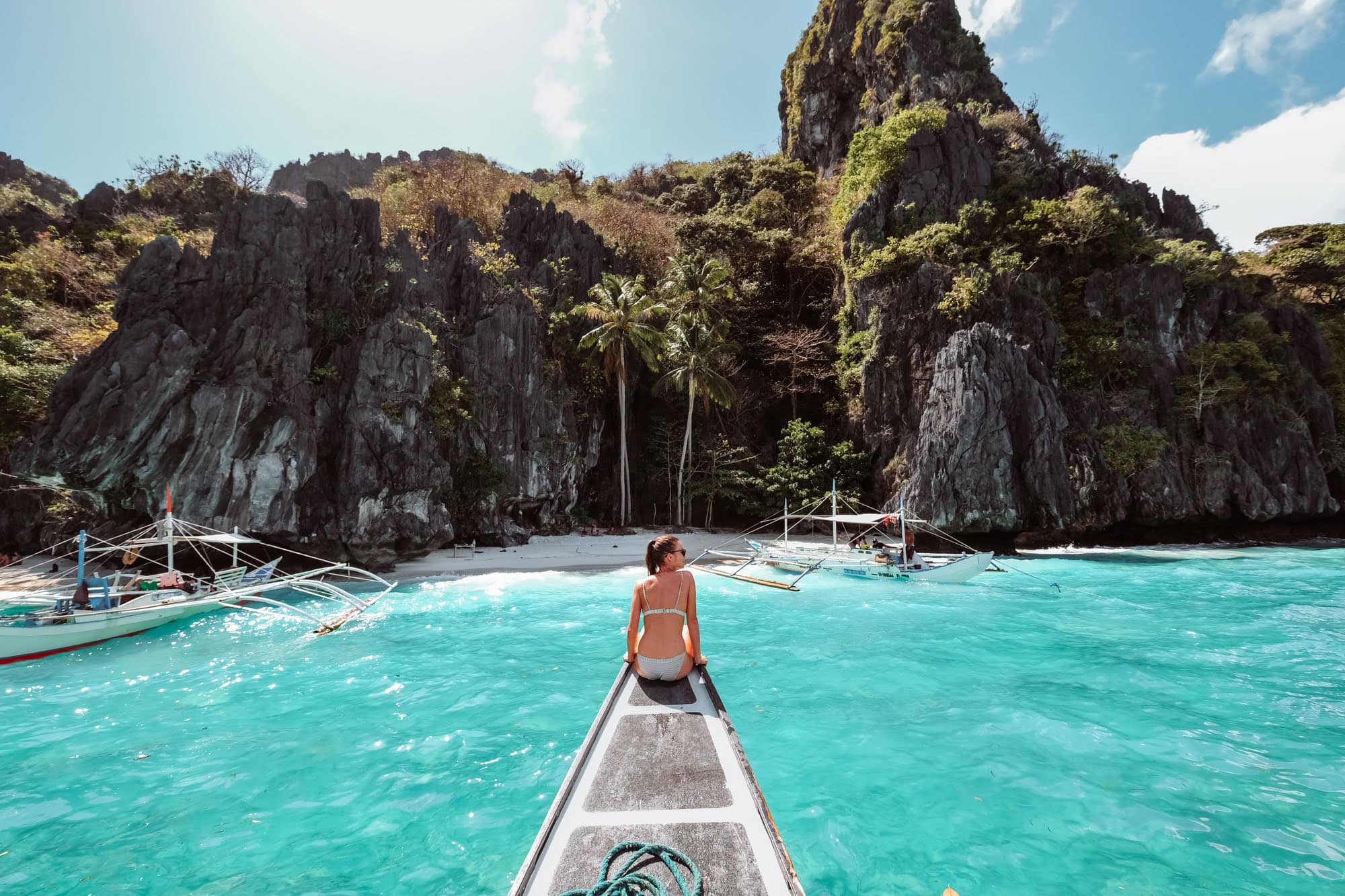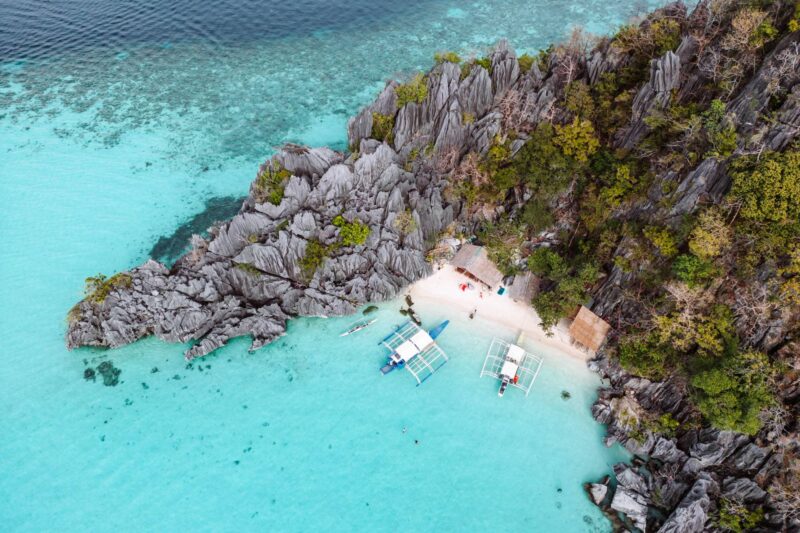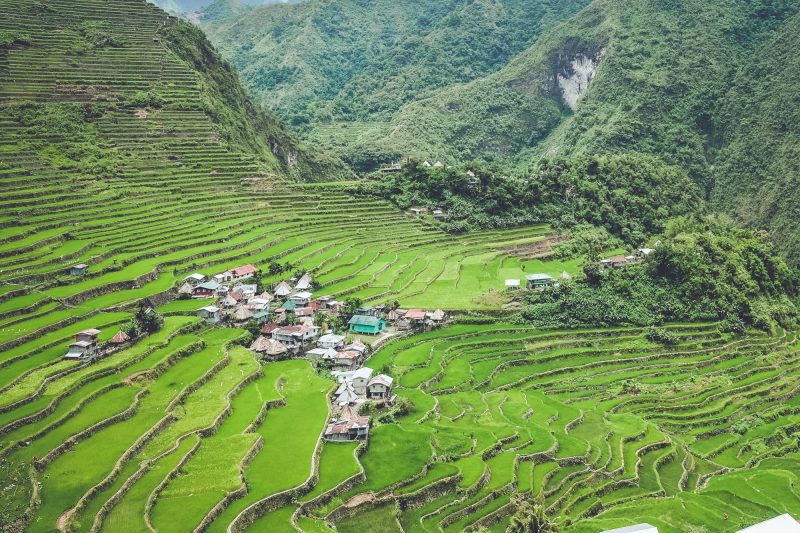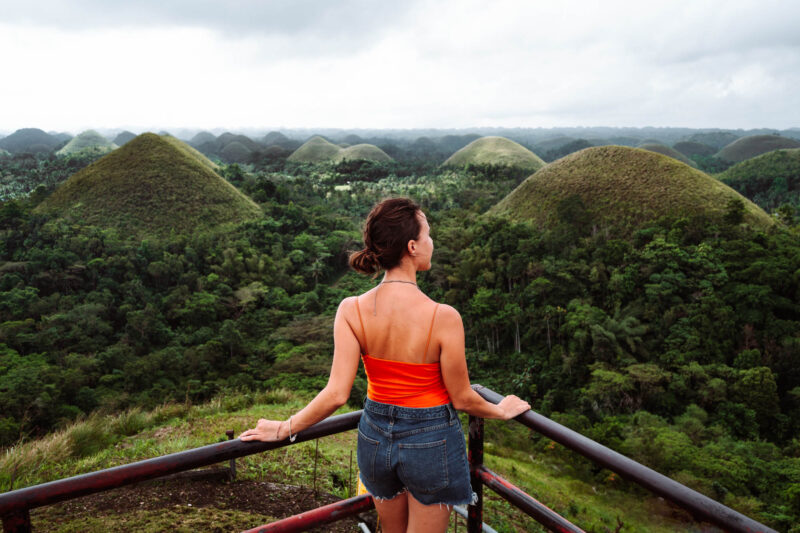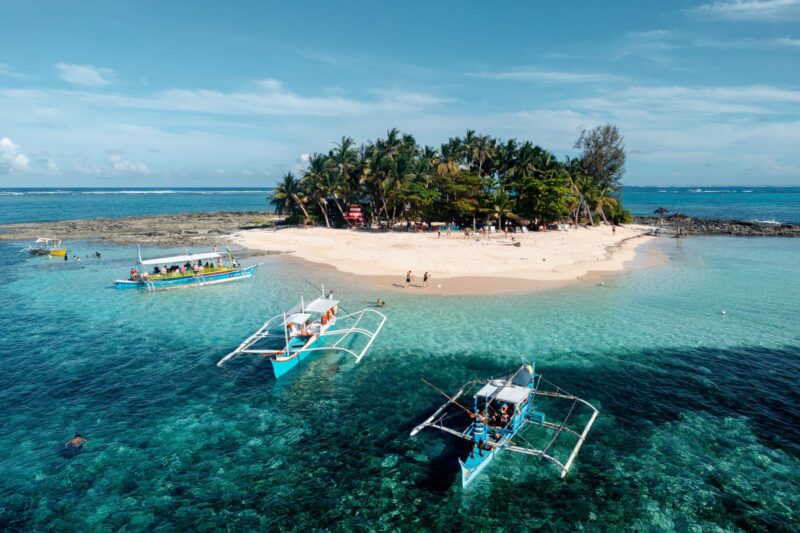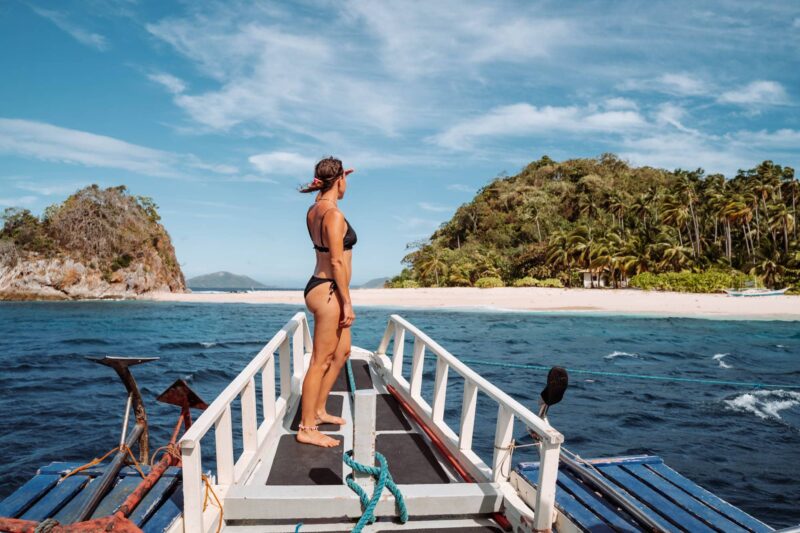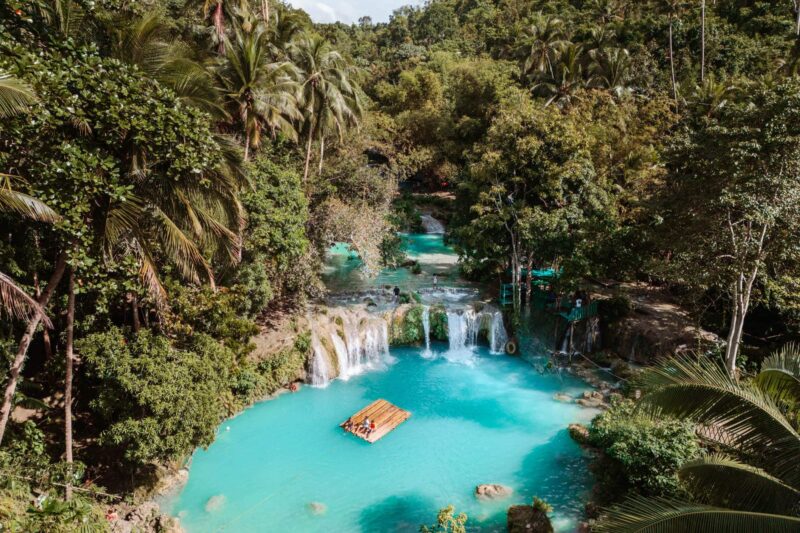A trip through the Philippines is all about tropical beaches, colorful coral gardens, and friendly locals. With over 7,000 islands, no day is ever the same, and you’re constantly surprised by the changing nature and relaxed atmosphere. From the azure blue lagoons of Palawan to the green rice terraces of Banaue – every place is unique and has its own charm. Traveling in the Philippines is different from home, and the culture is also different from other Southeast Asian countries. That’s why it’s nice to be well-prepared. We’ve visited the Philippines several times and have gathered 13 practical tips and handy information for you. This way, you can make the most of your trip through the Philippines!
This is the Best Time to Visit the Philippines
The Philippines has different seasons, and the weather can vary significantly by region. In general, the period from December to May is the best time to visit the Philippines. This is the dry season, with the most chances of sun, clear skies, and calm seas. From June to October, there’s the most rain, and typhoons can occur, especially in July and August. November is a transition month; if you’re lucky, the sun will show itself, but there’s also a chance that a lot of rain will fall. Keep in mind that during the periods around Christmas, Chinese New Year, and Easter, some places will be extra crowded.
Note: The climate on the island of Siargao differs slightly from the rest of the country because the dry season starts later there. The best months to visit Siargao are from March to June.

Download the Official Registration App Before You Depart
Before heading to the Philippines, you must register online via an etravelcard. This is mandatory for all travelers and replaces the old paper form that you previously had to fill out on the plane. The process is simple: create an account, fill in your personal details, and a short health declaration. After registering, you’ll receive a QR code that will be scanned at immigration. You can complete your registration up to 72 hours before departure. It’s best to do this before your flight, as Wi-Fi at airports in the Philippines is often slow, and after a long trip, you’ll want to avoid extra hassle or waiting in line.
Traveling Through the Philippines Requires a Bit More Planning
Traveling through the Philippines requires a bit more planning than you might be used to in other Asian countries. To get the most out of your trip, here are some practical tips for traveling through the Philippines.
- Book your domestic flights in advance – Because the Philippines consists of thousands of islands and the distances are often greater than expected, you can’t avoid domestic flights. If you book them a few months in advance, you can often get tickets for around $44-$66. If you wait longer and book last-minute, prices can go up.
- Book popular accommodations in advance – Unlike countries like Thailand or Bali, the availability of really good accommodations in the Philippines is much more limited. Especially the popular, atmospheric hostels and small hotels often fill up well in advance, especially during peak season. If you want to stay at the best accommodations, it’s better to book them in advance. We’ve made an overview of our favorite accommodations in the Philippines. These are places where we’ve had a great time ourselves or that we were recommended by followers. This way, you’re sure to have a pleasant stay.
- Book your expedition between Coron and El Nido in advance – Even for the multi-day expedition between Coron and El Nido, it’s worth reserving in advance. This activity is so popular that it’s often fully booked months ahead.
By thinking ahead, you not only secure the best places, but you’ll also travel much more relaxed. You won’t have to search, wait, or make compromises once you’re there.
How Traveling Between the Islands Works
Traveling through the Philippines means alternating between boats, buses, scooters, and everything in between. Between some islands, you’ll take a ferry, which operates daily on many routes, and for long distances, it’s best to book a domestic flight. On the mainland, you can travel very cheaply by bus or jeepney; an old-fashioned bus often painted in bright colors where you can hop on for just a few pesos. The system seems a bit chaotic at first since there are no clear routes indicated, but if you ask which jeepney to take, it’s a fun way to travel. For short trips, there are tuk-tuks and tricycles everywhere. Tricycles are motorcycles with a covered sidecar. Once at your destination, you can easily rent a scooter through your accommodation or a rental company.
Try Filipino Cuisine
Step into a local eatery, called a carinderia, and you’ll see rows of steaming pots filled with delicious homemade dishes. Let your plate be heaped with everything that looks tasty: roasted pork, fried fish, eggplant omelet, hot dog sausages, vegetables, or a spoonful of stew. Along the road, you’ll also find barbecues where skewers of chicken or pork are sizzling over the fire. A few classic dishes you must try:
- Adobo – A stew made with soy sauce and vinegar.
- Sisig – Finely chopped meat served on a sizzling cast iron platter.
- Kinilaw – The Filipino version of ceviche with coconut milk.
The Filipino Culture
The culture of Filipinos is a unique mix of influences and customs. The Philippines is the only predominantly Catholic country in Southeast Asia, a legacy of Spanish colonization. This influence is not only visible in churches but also in names, language, and even in the money: the currency is still called peso.
What might stick with you most during your travels is the warmth of the people. Hospitality is deeply embedded in the culture here. You’ll be greeted with a smile, helped on the street, or spontaneously invited to eat with a local family at their home. There’s also a good chance that there will be singing, as karaoke is an inseparable part of Filipino daily life. It’s even a social tradition. You’ll see karaoke setups everywhere; in living rooms, restaurants, on the beach, and in parks. Birthdays, family gatherings, Sundays: any moment is a good excuse to grab the microphone. Singing is a way to express emotions and have fun together. The official languages are Filipino and English, but in each region, you’ll also hear local dialects. It’s this combination of language, music, and warm traditions that makes Filipino culture so lively and accessible to travelers. Most people speak excellent English due to the American colonial influence.
Respect Nature and Take Care of Beaches, Coral, and Marine Life
The Philippines is known for its paradisiacal beaches and beautiful underwater world. This is why many travelers have the Philippines on their bucket list. Enjoy it to the fullest, but do so in a conscious and respectful way. Avoid excursions where whale sharks are fed to tourists, and don’t touch coral. Always keep a safe distance from turtles and other marine life, no matter how tempting it may be to get close.
Also, leave the beautiful seashells on the beach. Shells may seem abandoned, but they’re still an important part of the ecosystem. Hermit crabs regularly switch to a bigger shell, and the minerals in the shells contribute to the health of the beach and the sea. Everything in nature has a purpose, even when it’s lying still in the sand.
A Guide is Required at Many Locations in the Philippines
When visiting waterfalls, viewpoints, or other natural spots, it’s often required to go with a local guide in the Philippines. This isn’t because the route is complicated, but rather for safety reasons. Some paths can be slippery or steep, and accidents have occurred at some locations in the past. Additionally, it’s a way to support the local economy and create jobs in the villages. Often, you only pay a few dollars for a guide or contribute through a donation. Think of it as a great opportunity to learn more about the surroundings and contribute to the community.
Good to know: In many places, an environmental fee is also requested to protect and maintain nature. This usually ranges between 20 and 200 pesos.

Be Careful When Buying Sunscreen
Sunscreen is essential in the Philippines, but be cautious about what you buy and where. Sunscreen with a whitening effect is more of a rule than an exception in the Philippines, and many local stalls sell products that aren’t what they seem. Fake products from well-known brands like Nivea often pop up. These counterfeit products may not protect you or sometimes not protect at all. The safest places to buy sunscreen are at pharmacies like Watsons, 7-Eleven, or a reliable dive shop. Even better: bring your trusted brand from home. Choose a reef-safe version so you protect not only yourself but also the coral and marine life.

Bring Your Own Snorkel Set
The underwater world of the Philippines is a true paradise filled with beautiful coral reefs. The ocean harbors incredible biodiversity, from colorful starfish and tropical fish to majestic manta rays. The waters around the Philippines are some of the most beautiful in the world! The chance is high that you’ll do a lot of snorkeling during your trip through the Philippines. That’s why it’s a good idea to bring your own snorkel set. It’s cheaper and more hygienic than renting one each time. Plus, your own snorkel fits your head the best, and you can jump right into the water wherever you are.
Tip: Also bring baby shampoo to rub a drop on the inside of your diving mask before snorkeling. This helps prevent fogging and won’t sting your eyes.
Money Matters and Tips in the Philippines
The currency in the Philippines is the Philippine peso (PHP). It’s handy to withdraw some cash at the airport right after arrival. Keep in mind that a fee is charged, and it can vary by bank. The BPI bank is often the cheapest option. You can withdraw up to 20,000 pesos per transaction, while other banks typically allow a maximum withdrawal of 10,000 pesos.
You can often pay with your credit card at large hotels and restaurants, but you’ll still need cash at many other places. ATMs are commonly found in touristy areas, but this can be more challenging on smaller islands. ATMs may sometimes be empty or temporarily out of service. Therefore, make sure you always have enough cash on hand.
Tipping is not mandatory but is certainly appreciated. Wages are low in the Philippines, so a little extra goes a long way. In restaurants and cafés, a 10% tip is common. Guides often work on a donation basis or receive a small fee. If you’re happy with the tour or guidance, a tip is definitely in order.
You’ll Need a World Plug Adapter
In the Philippines, you’ll need a world plug adapter in many places. The country uses plug types A, B, and sometimes C. Types A and B are the same as in the United States: flat, rectangular pins. Sometimes the European type C plug will also fit, but that’s not always the case. Therefore, bring a world plug adapter so you can charge your devices anywhere and everywhere. A model with multiple USB ports is quite handy, especially if you want to charge several devices at once, like your phone, camera, and power bank.

Here’s How to Plan Your Trip to the Philippines
Traveling through the Philippines may sound like a logistical challenge with all the islands, ferries, and flights, but it’s very easy to organize your trip yourself without the help of a travel agency. We’ve made multiple trips through the Philippines, and with the help of our tips, you can easily plan your trip. We’ve outlined the ideal itinerary through the Philippines and written a separate article on each destination. In these articles, we describe how to get there, what to do, and give tips for the best restaurants and accommodations. Additionally, we’ve created a list of our favorite spots in the Philippines. This way, you can easily plan your own trip to the Philippines. Enjoy your travels!

